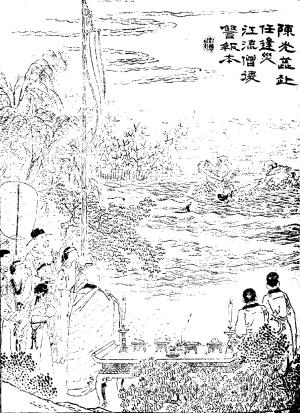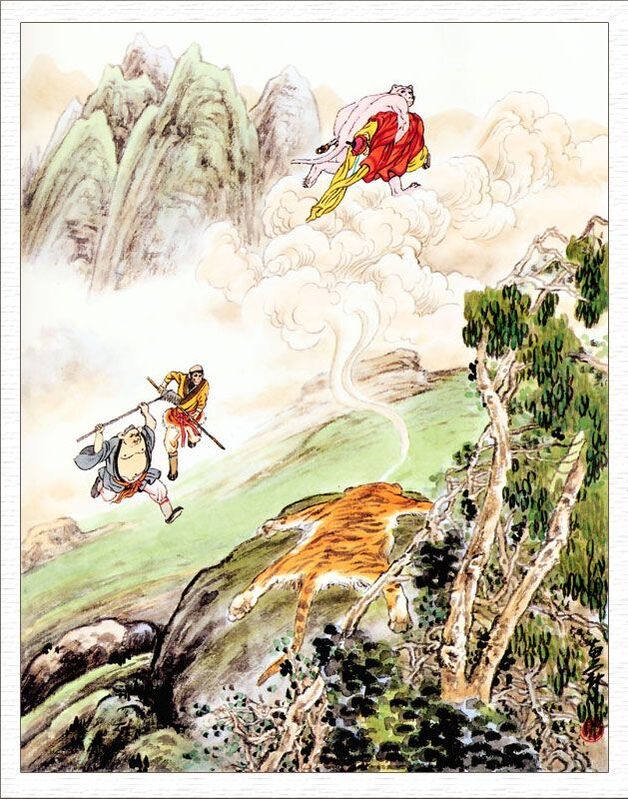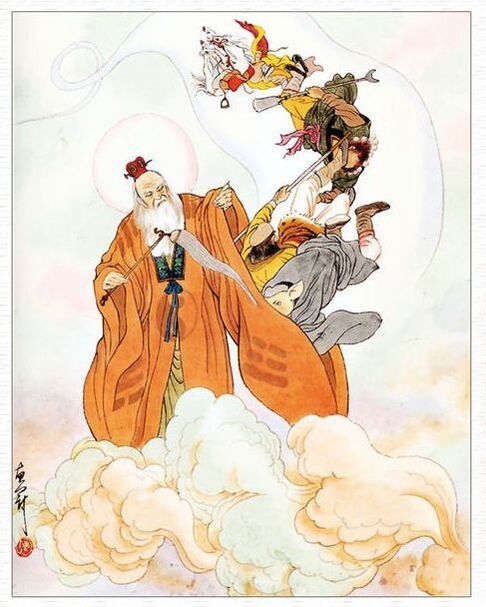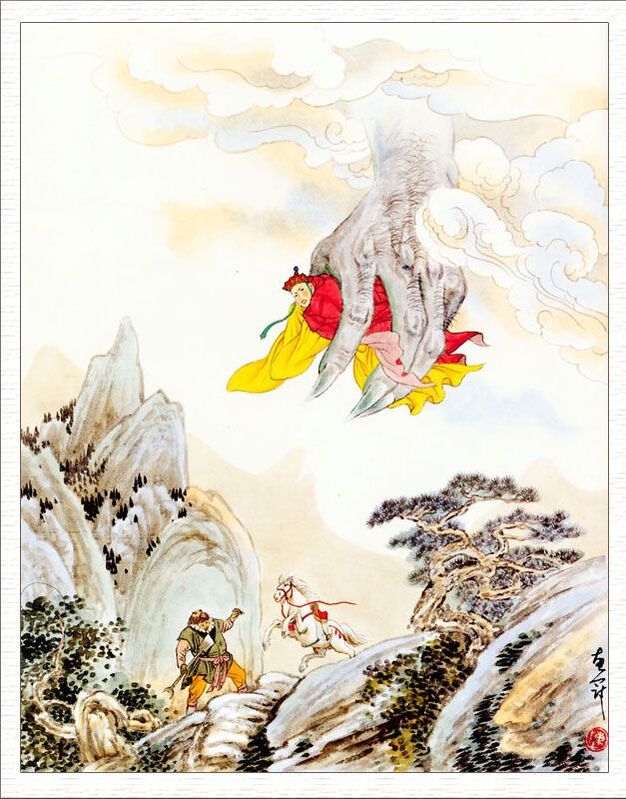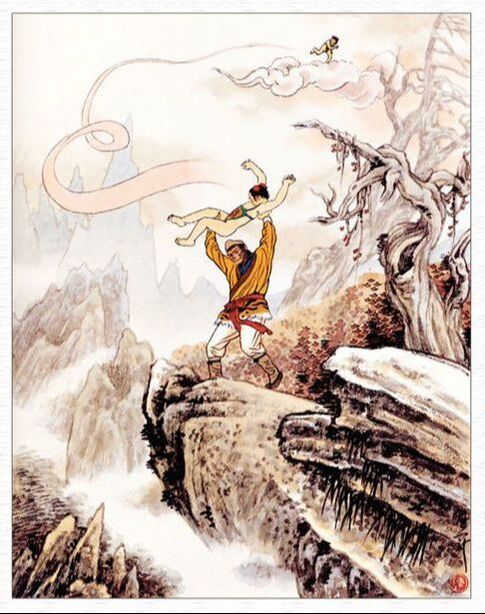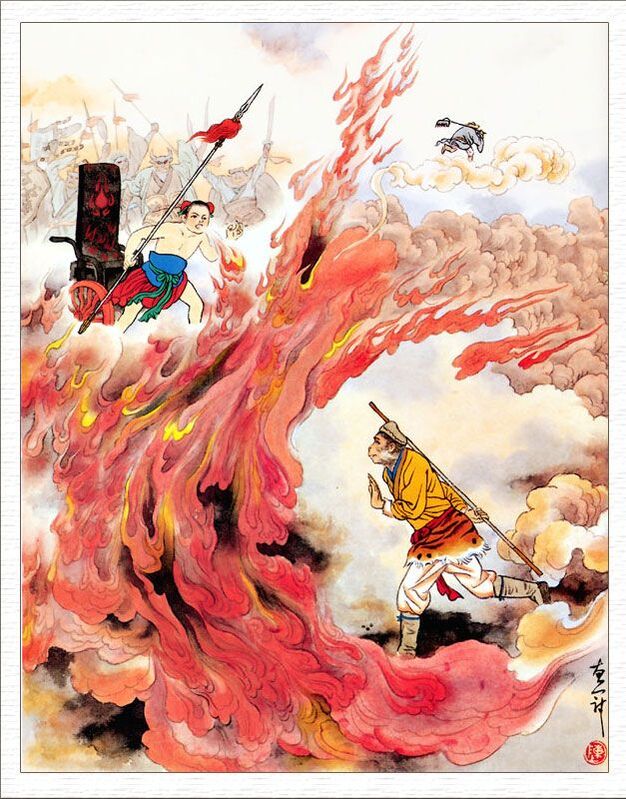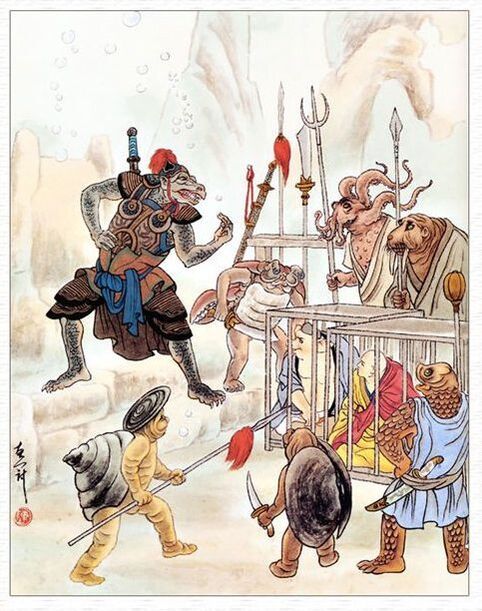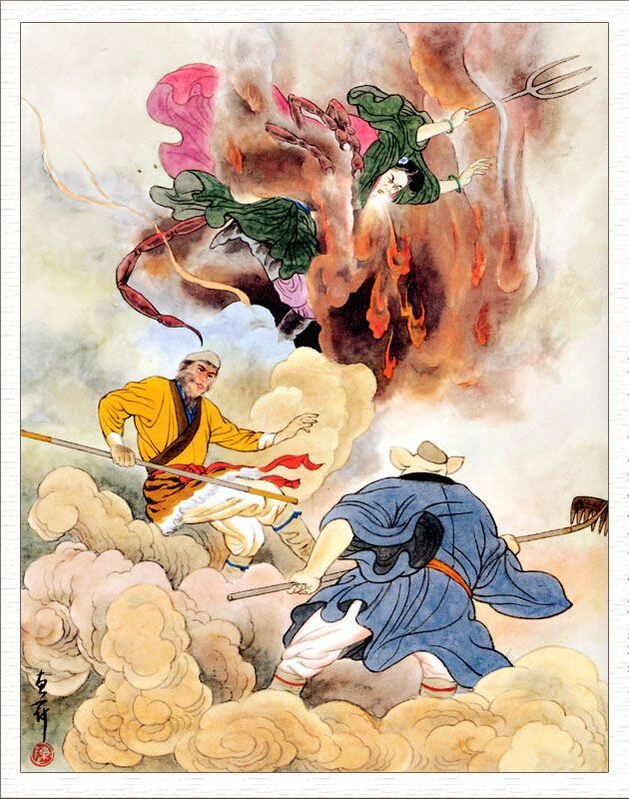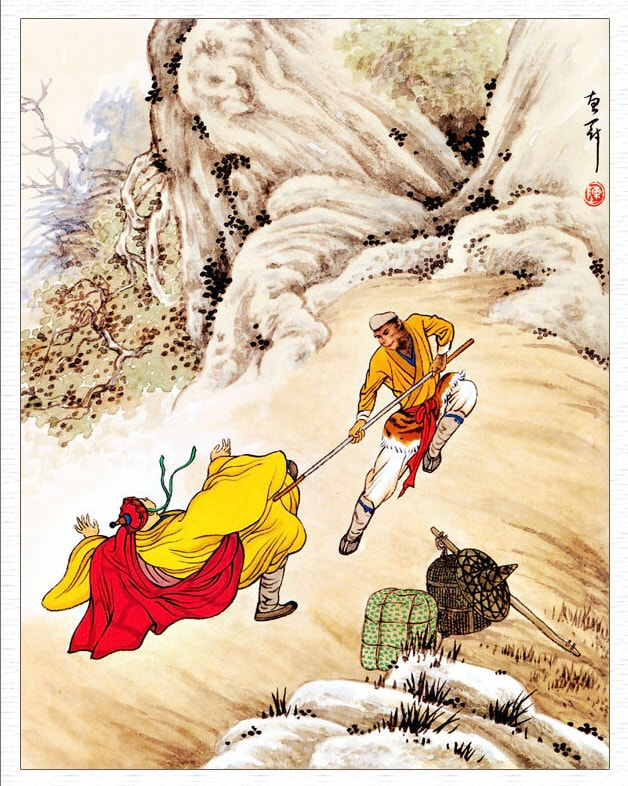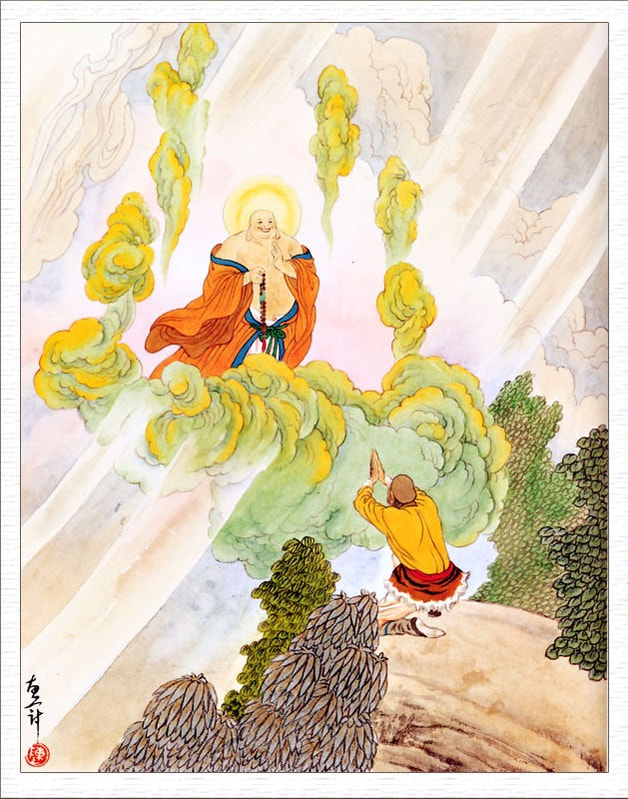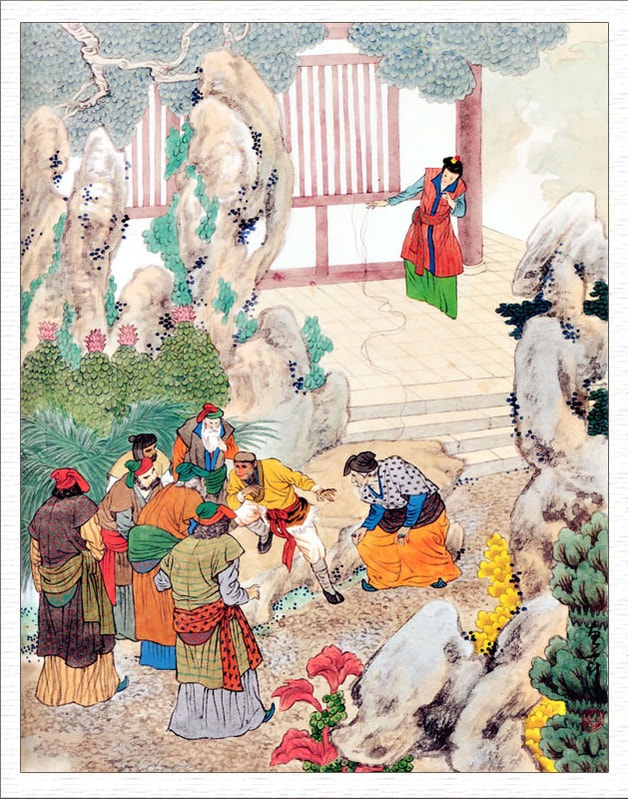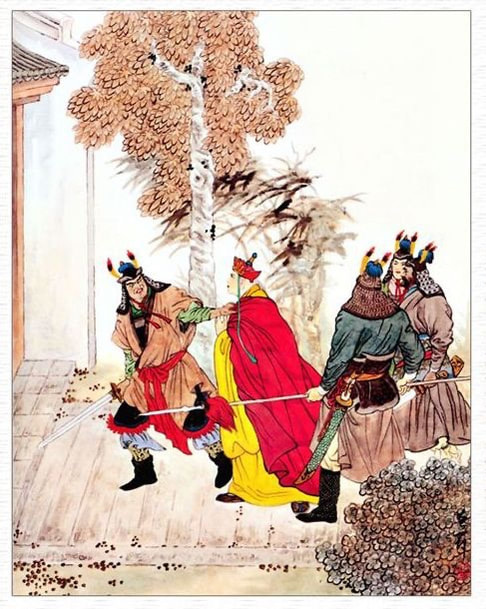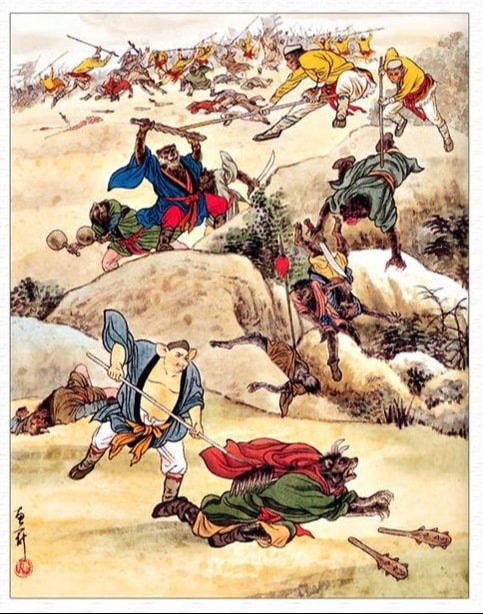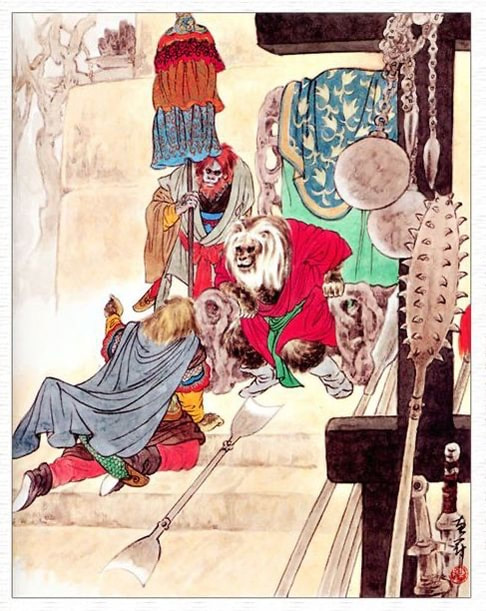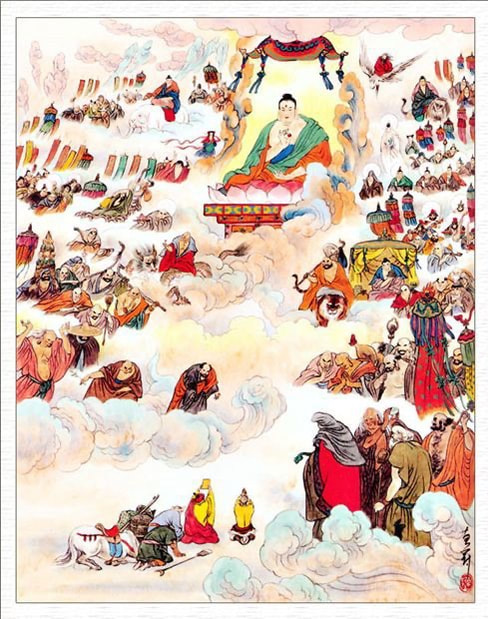|
Updated: 15/4/2024 Contents
IntroductionThe 100-chapter Journey to the West novel is an exciting but challenging read for anyone. To simplify this, here I present a super brief, yet complete, summary outlining the main events occurring in each chapter of the novel. This summary hopes to provide insight to Journey to the West for those new to the story, cannot access the full novel, or are simply not bothered to read the full 100 chapters. Everything in this summary is listed in bullet points, by chapter, in chronological order. I guarantee that it'll be a fun read to help guide you through this epic novel. For those interested in reading the full 100-chapter novel, free PDF versions in various language translations, including English, can be accessed for free on the Journey to the West Research blog, archived by Jim R. McClanahan here: Archive #42 – PDFs of Journey to the West Translations Additionally, you can find the original text in simplified Chinese for free here: 杀杀中文笔记 - 西游记 (Journey to the West; Monkey King) and in traditional Chinese for free here: 中國哲學書電子化計劃《西遊記》 All images used below (except for chapter 9 [1]) are illustrations credited to Chen Huiguan (1935-, 陈惠冠). Novel SummaryChapter 1
Chapter 2
Chapter 3
Chapter 4
Chapter 5
Chapter 6
Chapter 7
Chapter 8
Chapter 9
Chapter 10
Chapter 11
Chapter 12
Chapter 13
Chapter 14
Chapter 15
Chapter 16
Chapter 17
Chapter 18
Chapter 19
Chapter 20
Chapter 21
Chapter 22
Chapter 23
Chapter 24
Chapter 25
Chapter 26
Chapter 27
Chapter 28
Chapter 29
Chapter 30
Chapter 31
Chapter 32
Chapter 33
Chapter 34
Chapter 35
Chapter 36
Chapter 37
Chapter 38
Chapter 39
Chapter 40
Chapter 41
Chapter 42
Chapter 43
Chapter 44
Chapter 45
Chapter 46
Chapter 47
Chapter 48
Chapter 49
Chapter 50
Chapter 51
Chapter 52
Chapter 53
Chapter 54
Chapter 55
Chapter 56
Chapter 57
Chapter 58
Chapter 59
Chapter 60
Chapter 61
Chapter 62
Chapter 63
Chapter 64
Chapter 65
Chapter 66
Chapter 67
Chapter 68
Chapter 69
Chapter 70
Chapter 71
Chapter 72
Chapter 73
Chapter 74
Chapter 75
Chapter 76
Chapter 77
Chapter 78
Chapter 79
Chapter 80
Chapter 81
Chapter 82
Chapter 83
Chapter 84
Chapter 85
Chapter 86
Chapter 87
Chapter 88
Chapter 89
Chapter 90
Chapter 91
Chapter 92
Chapter 93
Chapter 94
Chapter 95
Chapter 96
Chapter 97
Chapter 98
Chapter 99
Chapter 100
ConclusionHere ends The Journey to the West. - Notes[1] except for chapter 9 The omission of the ninth chapter from Chen's set of illustrations is due to the fact that it did not exist in the original 1952 publication of the novel; the chapter was added in years later. For more info, please see: The Mysterious Ninth Chapter and Sun Wukong’s Links to Chinese Opera [2] watch (更) In ancient China, night time was divided into five periods, each known as a "watch". These five watches, from first to fifth, correspond with the times of 19:00-21:00, 21:00-23:00, 23:00-1:00, 1:00-3:00 and 3:00-5:00, respectively. [3] Bimawen (弼马温) Literal meaning (Chinese): to assist horse temperament. The title "Bimawen" is actually a Chinese pun and a taunt towards Monkey. This phrase is a homophonic play on the Chinese phrase bi mawen (避马瘟, lit: avoid the horse plague). In ancient Chinese medical doctrine, it was believed that the urine of a female monkey could be used as a cure for horse diseases, and essentially horse plague. The use of this pun is to insult Monkey to be a woman, which offends his masculinity. English translations of Bimawen in the past have all revolved around the concept of "Protector of the Horses" or "Keeper of the Horses". Anthony C. Yu (2012) currently has the most accurate translation for Bimawen. He translates it as "BanHorsePlague". However, since none of these names really has the same flavour to the punny phrase, I have simply kept the original. [4] Taizong (太宗) Literal meaning (Chinese): supreme ancestor. Taizong is a common reigning title that the second emperor of a Chinese dynasty assumes. This corresponds to the reigning title of the first emperor of a dynasty, which is "Gaozu (高祖, lit: high ancestor)". [5] Samadhi (समाधी, 三昧) Literal meaning (Sanskrit): to establish complete consciousness. In the context of Journey to the West, Samadhi is a term used to describe things of full cultivation, associated with the idea of "定 (fixity/arrest/preservation)". [6] Zhenyuan (镇元) Literal meaning (Chinese): one who suppresses his origin. Also known as: Lord Equalling the World (yushitong jun, 与世同君). Master Zhenyuan is the patriarch of all Earth immortals. He is one of the highest ranking and most powerful Daoist deities. [7] Three Stars (三星) The Three Stars are three popular deities in Daoist folklore, which represent the three features of "blessing (fu, 福)", "fortune (lu, 禄)" and "longevity (shou, 寿)". [8] Cadaver Demon (尸魔) "Cadaver Demon" is the recorded name of the more famously known White Bone Demon (baigu jing, 白骨精) in the original novel. The text has never called her "White Bone Demon". [9] Precious-Image Kingdom (宝象国) The Chinese name Baoxiang 宝象 can be translated as either Precious-Image or Precious-Elephant; both meanings have strong Buddhist associations. I have chosen to use the former simply because the Journey to the West novel describes the setting of the place to be really beautiful, and its scenery is sure to be outstanding. Hence, I adapt this name because of the kingdom's "precious image". [10] poor looks The reason for the poor looks is because, as a travelling monk who has left home, Tripitaka is to dress humbly. During the journey, he usually wears an old, patched monk's robe (commonly brown) and a straw hat. This is in contrast with the more iconic look of Tripitaka from the classic 1986 Journey to the West TV show, where he is inaccurately portrayed with a kasaya cassock and Vairocana hat on at all times. [11] trio of gods The trio referenced are the Three Pure Ones (sanqing, 三清, a.k.a. Three Purities), the Daoist trinity. The three deities are: Celestial Worthy of Primal Beginning (yuanshi tianzun, 元始天尊), Celestial Worthy of Spiritual Treasures (lingbao tianzun, 灵宝天尊) and Celestial Worthy of the Way and Virtue (daode tianzun, 道德天尊; this is Laozi (老子), commonly known in Journey to the West as Supreme Exalted Lord Lao). [12] Krttika (कृत्तिका, 昴日) Literal meaning (Chinese): rising sun. Krttika is one of the 28 Nakshatra of Hindu cosmology. The corresponding Chinese constellation is Mao (昴), one of the 28 Lodges or Mansions. Krttika and Mao both represent the star constellation of Pleiades. The Chinese literal translation, "rising sun", reflects the true form of the respective star official, whose true form is a rooster, an animal known for alerting sunrises. [13] Squire Ten-Eight (十八公) Literal meaning (Chinese): squire number eighteen. The reason why I translated shiba 十八 to "ten-eight" rather than the literal "eighteen" is because the name of the character Squire Ten-Eight is a pun of the Chinese written language. The character is later revealed in the chapter to be the sprit of a pine tree. When combined ideographically, his name results in the character for pine (song, 松). i.e. 十 (ten) + 八 (eight) = 木 (wood); 木 (wood) + 公 (squire) = 松 (pine)! [14] Maitreya (मैत्रेय, 弥勒) Literal meaning (Sanskrit): friendliness. The Buddha Maitreya is more commonly known in China as the monk Budai (布袋, lit: cloth bag - this is a reference to a bag that he is normally depicted carrying around, likely the same Human-Seed Bag that makes an appearance in Journey to the West), the Fat Buddha (pangfo, 胖佛), or to many English speakers: the Laughing Buddha (xiaofo, 笑佛). In some sources, he is considered as a Bodhisattva rather than a Buddha. [15] Hou (犼) Also known as: Denglong (蹬龙, lit: transcending dragon). The Hou is a protection creature in Chinese mythology, portrayed here in Journey to the West to be the steed of Bodhisattva Guanyin. A common belief of the Hou's appearance consists of features from ten animals: deer horns, camel head, cat ears, shrimp eyes, donkey mouth, lion hair, snake neck, Shen (蜃, clam-monster) belly, koi (grass carp) scales, eagle front claws and tiger back paws. Other sources state that the Hou is a Mongolian wolf-dragon, whose head is used as a common design in roof architecture. [16] Roc The Roc is a giant legendary bird of prey in Arabian folklore, with its name originating from the Arabic word ruk (رخ). It is the closest English translation to the mythical Chinese condor-like raptor called "Peng (鹏)". Another mythical bird similar to the Roc and Peng is the Garuda from Hindu culture. [17] Bhiksu (भिक्षु, 比丘) Also known as: Bhikku (भिक्खु). Literal meaning (Pali): one who lives by alms. Bhiksu are simply male Buddhist monks. Female Buddhist nuns are called "bhiksuni". [18] Celestial Worthy (天尊) Also translated as: Lord of Heaven. Celestial Worthy is the highest rank in the Daoist pantheon. Most of the highest-ranking Daoist deities (e.g. Supreme Exalted Lord Lao) hold this title. It is the Daoist equivalent of Buddha (fozu, 佛祖, lit: Buddhist patriarch) in Buddhism. [19] Four Wood Creature Stars (四木禽星) These four creatures are just personified representatives for the star constellations they stand for, which all share the element of wood. These constellations and their creature symbols are: Citra (jiao, 角) the flood-dragon (jiao, 蛟), Uttara-Ashadha (dou, 斗) the Xie (獬, mythical Chinese unicorn), Revati (kui, 奎) the wolf and Punarvasu (jing, 井) the wild-dog. [20] Supreme Yin (太阴) The Supreme Yin is the Chinese name referring to the Moon, which is said to be the largest body of Yin (dark) energy. This is opposed to the Supreme Yang (taiyang, 太阳), which refers to the Sun, of Yang (light) energy. [21] Preface to the Sacred Teachings (圣教序)
Also translated as: Preface to the Holy Religion (Anthony C. Yu, 2012) This composition was historically authored by Emperor Taizong of Tang (598-649 AD) in 648 AD, in gratitude and celebration of the priest Xuanzang's (602-664 AD) achievements in translating Buddhist sutras he had retrieved. The composition was transcribed by renowned Tang calligrapher Chu Suiliang (596-658 AD, 褚遂良) and inscribed into two stone steles by Wan Wenshao (?-? AD, 万文韶). The steles stand at the Great Wild Goose Pagoda (dayan ta, 大雁塔), located in southern Xi'an, Shaanxi province, China.
3 Comments
Joan Collins
2/9/2021 05:22:26
Great work
Reply
Re Bo
16/1/2024 17:13:41
This is really high quality and very helpful. Please continue your impressive work!
Reply
Irwen W
19/3/2024 20:56:49
Thank you. Your kind feedback is much appreciated and I look forward to continuing to deliver more.
Reply
Leave a Reply. |
A complete, yet simple, summary to guide you into the full Journey to the West story.
Read along and experience the eighty-one ordeals with our characters. Author
Irwen Wong |









